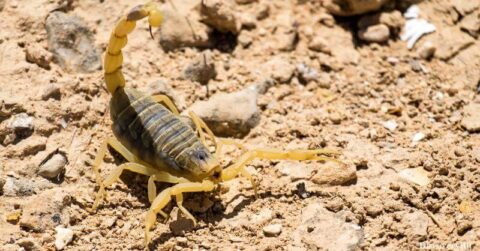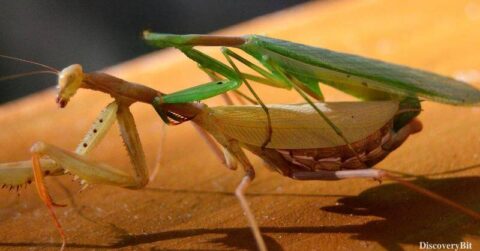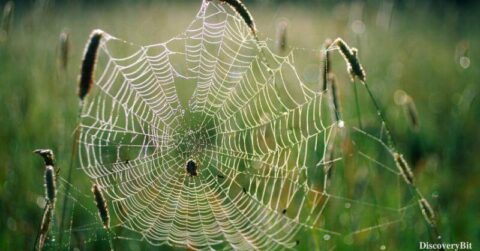Embarking on a critical exploration into the fate of our indispensable pollinators, the question echoes loudly: Are bees endangered, navigating perilous territory that demands immediate intervention? The gravity of the situation is underscored by staggering statistics, urging us to delve into the intricate dance of nature where bees play the unassuming but irreplaceable role of choreographers.
Between April 2015 and 2016, U.S. beekeepers reported a devastating 44% loss of bee colonies, a figure exacerbated in European nations like Belgium, France, Netherlands, Greece, Italy, Portugal, Spain, Switzerland, and Germany, where rates exceeded 50%. The global concern deepens in China, the leading honey producer in Asia, as wild honey bee populations decline, compelling farmers to resort to manual pollination, bypassing the traditional use of honey bee pollen.
Recent studies paint a bleak picture, revealing a significant 30% decline in honey bee populations over the past decade, mirroring a broader trend that places various bee species, including bumblebees, on the precipice of extinction. This prompts the unavoidable question: Are bees going extinct, and what decisive actions can reverse this alarming trend?
The economic reverberations of bee decline are profound, with honey bees alone contributing approximately $15 billion worth of crop pollination in the United States annually. This isn’t just an economic concern; it’s a threat to biodiversity, as over 90% of flowering plants rely on bees for reproduction. The intricate web of life woven by these tiny creatures faces unraveling if we fail to act collectively.
The urgency amplifies with Albert Einstein’s chilling prediction, allowing humanity a mere four-year window post-bee extinction. The annual and consistent decline in global bee colonies echoes this warning. The intricate challenges of pesticides, habitat loss, climate change, and diseases contribute to the complex tapestry of bee endangerment.
This exploration transcends mere information; it’s a rallying call for collective responsibility. Governments, organizations, and individuals must unite in a mission to save bees, protect ecosystems, and ensure a sustainable future for all. Join the cause, as the fate of bees intertwines with the destiny of our planet.
A Few Endangered Bee Species
In the delicate dance of biodiversity, certain bee species find themselves on the brink of extinction, each facing unique challenges that warrant our attention. Let’s explore the different types of endangered bees and the relative endangerment they endure.
1) Rusty-Patched Bumblebee (Bombus affinis):
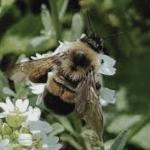 -Status: Critically endangered.
-Status: Critically endangered.
-Facts: Once a common sight in Eastern North America, the rusty-patched bumblebee has experienced an alarming 90% decline in its population. Pesticide exposure, habitat loss, and diseases have driven this bumblebee to the edge of extinction.
2) Western Bumblebee (Bombus occidentalis):
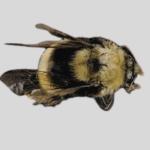 -Status: Endangered.
-Status: Endangered.
-Facts: The western bumblebee, once abundant in western North America, has witnessed a substantial population decline. Threats include pesticide exposure, habitat destruction, and competition with non-native bee species.
3) Yellow-Faced Bees (Hylaeus spp.):
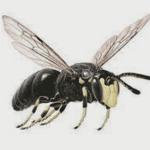 -Status: Endangered.
-Status: Endangered.
-Facts: Comprising a diverse group of solitary bees, the yellow-faced bees face threats from habitat loss due to urbanization and agriculture expansion. Their decline impacts native plant pollination in Hawaii.
4) Mason Bees (Osmia spp.):
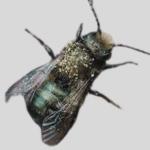 -Status: Vulnerable.
-Status: Vulnerable.
-Facts: Mason bees, essential pollinators for fruit trees, face habitat loss and pesticide exposure. Their vulnerability highlights the interconnectedness of bee decline with agricultural practices.
5) Red Mason Bee (Osmia bicornis):
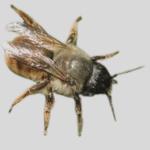 -Status: Near Threatened.
-Status: Near Threatened.
-Facts: The red mason bee, crucial for apple pollination, faces challenges from pesticide exposure, habitat fragmentation, and the lack of suitable nesting sites.
6) Franklin’s Bumblebee (Bombus franklini):
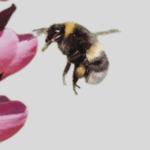 -Status: Critically endangered.
-Status: Critically endangered.
-Facts: Once abundant in the Pacific Northwest, Franklin’s bumblebee has seen a precipitous decline. Pesticides, diseases, and habitat loss have pushed it to the brink of extinction.
7) Giant Honey Bee (Apis dorsata):
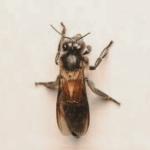 -Status: Vulnerable.
-Status: Vulnerable.
-Facts: While honey bees are generally resilient, the giant honey bee faces threats from habitat loss, pesticide exposure, and human disturbances in its native Asian habitats.
Understanding the relative endangerment of these bee species is crucial for targeted conservation efforts. Each endangered bee plays a unique role in pollination and ecosystem health, making their protection a shared responsibility to save bees from further decline.
Factors Behind the Decline in Bee Population
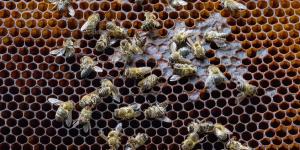 In the delicate balance of nature, the alarming decline in bee populations signals a crisis that demands our attention. Let’s dissect the web of challenges, exploring the major causes that threaten the very existence of these vital pollinators.
In the delicate balance of nature, the alarming decline in bee populations signals a crisis that demands our attention. Let’s dissect the web of challenges, exploring the major causes that threaten the very existence of these vital pollinators.
1) Pesticides Pervasion: The pervasive use of neonicotinoid pesticides has been a significant driver in bee decline. These chemicals compromise bee immune systems, impair navigation, and disrupt reproductive capabilities. A landmark study in 2012 linked neonicotinoids to colony collapse disorder, a phenomenon where entire bee colonies perish.
2) Habitat Loss: Urbanization and agricultural expansion have led to the destruction of natural habitats crucial for bee nesting and foraging. Fragmented landscapes disrupt the intricate relationships between bees and the diverse plant species they depend on.
3) Climate Change Chaos: Shifts in climate patterns directly impact the availability of flowering plants, disrupting the synchrony between bee activity and plant blooming seasons. Extreme weather events, like unseasonal frosts, pose direct threats to bee colonies.
4) Disease Dynamics: The spread of diseases, particularly Varroa destructor mites, has decimated honey bee populations globally. These parasitic mites attach to bees, transmitting viruses and weakening colonies.
5) Monoculture Menace: Large-scale monoculture practices in agriculture limit the variety of plants available for bees to forage. This lack of diversity leads to nutritional deficiencies and weakens bee immune systems.
6) Invasive Species Intrusion: Invasive plant species can outcompete native plants, reducing the availability of food sources for bees. The invasive European honey bee, in particular, can compete with native bee species.
7) Air Pollution Adversity: Airborne pollutants, including pesticides and industrial emissions, compromise bee respiratory systems and navigation abilities, further adding to their vulnerability.
8) Lack of Floral Resources: Bees rely on diverse floral resources for nutrition. The reduction in the availability of flowering plants due to various factors, including habitat loss and climate change, limits their food sources.
9) Artificial Light Interference: Artificial lights disrupt the natural behavior of nocturnal pollinators, affecting their foraging and navigation patterns.
10) Genetically Modified Organisms (GMOs): Some genetically modified crops may produce toxins harmful to bees. The cultivation of such crops poses risks to bee populations.
11) Lack of Forage Diversity: Limited access to a variety of flowers affects the health and nutrition of bees. Ensuring a diverse range of foraging options is crucial for their survival.
12) Water Contamination: Bees require clean water for various activities, including cooling the hive. Water contamination from pollutants poses a threat to their well-being.
Understanding these intricate challenges is essential as we collectively strive to save bees. Governments, organizations, and individuals must address these root causes to create sustainable solutions. Join the mission to protect bees, preserve biodiversity, and secure a future where the hum of bees remains an integral part of our natural symphony.
Top 20 Reasons Why Bees Are Vital for Our Existence
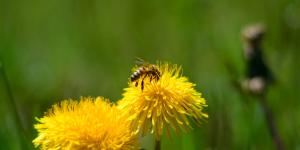 In the intricate tapestry of our ecosystem, bees emerge as unsung heroes, their significance extending far beyond the hum of their wings. Let’s explore the top 20 reasons why bees are indispensable, weaving together a narrative that underscores the urgency of saving these crucial pollinators.
In the intricate tapestry of our ecosystem, bees emerge as unsung heroes, their significance extending far beyond the hum of their wings. Let’s explore the top 20 reasons why bees are indispensable, weaving together a narrative that underscores the urgency of saving these crucial pollinators.
1) Pollination Powerhouses: Bees are unparalleled pollinators, facilitating the reproduction of over 90% of flowering plants. Their diligent pollination efforts lead to the production of fruits, vegetables, and nuts that make up a substantial portion of our diets.
2) Agricultural Backbone: Over $15 billion worth of crops in the United States rely on honey bee pollination annually, forming the backbone of our agricultural economy.
3) Biodiversity Guardians: Bees play a pivotal role in maintaining biodiversity by supporting diverse plant and animal species, creating resilient ecosystems.
4) Ecosystem Engineers: Their foraging activities contribute to soil health and promote plant growth, making bees unwitting architects of robust ecosystems.
5) Global Food Security: Bees are instrumental in ensuring global food security by enhancing crop yields and quality.
6) Economic Boosters: Beyond agriculture, bees contribute significantly to various industries, from textiles to pharmaceuticals, adding billions to the global economy.
7) Medicinal Marvels: Bee products, such as honey and propolis, boast medicinal properties, offering remedies for ailments and supporting human health.
8) Natural Pest Control: Bees indirectly act as natural pest controllers, reducing the need for chemical pesticides in agriculture.
9) Seed Dispersal Agents: Some bee species aid in seed dispersal, crucial for the regeneration of diverse plant populations.
10) Floral Symphony: Bees enhance the beauty of our surroundings by ensuring the vibrancy of flowers through pollination.
11) Seasonal Synchrony: The timing of bee activity aligns with flowering seasons, creating a synchrony crucial for the survival of many plant species.
12) Habitat Stewards: Bees contribute to habitat formation for other wildlife by aiding in the growth of plants that serve as shelter and food sources.
13) Culinary Diversity: Bees influence the variety of foods available by pollinating diverse crops, enriching our culinary experiences.
14) Climate Resilience: By fostering plant growth, bees contribute to carbon sequestration, playing a role in climate change mitigation.
15) Genetic Diversity: The genetic diversity of bee populations is a valuable resource for research and future conservation efforts.
16) Cultural Symbolism: Bees hold cultural significance globally, symbolizing diligence, community, and interconnectedness.
17) Educational Opportunities: Bee colonies offer educational insights into complex social structures, communication, and biodiversity.
18) Artistic Inspiration: The intricate dance of bees inspires art, literature, and culture, reflecting their aesthetic and cultural importance.
19) Food Industry Support: Bees contribute to the production of ingredients used in food processing, sustaining the food industry.
20) Critical to Human Survival: Ultimately, the survival of bees is entwined with our own, as their decline poses a significant threat to global ecosystems and human existence
Major Conservation Efforts to Safeguard Bees
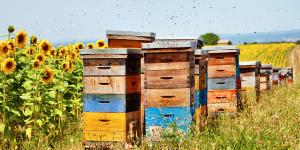 Amid the critical crossroads facing global bee populations, a beacon of hope emerges through concerted conservation efforts. Let’s delve into the significant strides being made to protect these essential pollinators and ensure a thriving future for bees.
Amid the critical crossroads facing global bee populations, a beacon of hope emerges through concerted conservation efforts. Let’s delve into the significant strides being made to protect these essential pollinators and ensure a thriving future for bees.
1) Pollinator-Friendly Agriculture: In a global push for pollinator-friendly farming, the EU takes a giant stride by imposing a near-total ban on neonicotinoid pesticides, hailed as a “major victory.” Initiatives worldwide promote reduced pesticide use, diversified crops, and wildflower-rich buffer zones to safeguard bee habitats. Organizations are planting bee-friendly zones to counter monoculture farming, advocating bans on harmful pesticides.
2) Habitat Restoration: Recognizing the significance of diverse habitats for bee survival, conservation programs focus on restoring natural landscapes. From urban green spaces to rural conservation areas, these efforts aim to provide bees with ample foraging and nesting opportunities.
3) Beekeeping Best Practices: The beekeeping industry plays a crucial role in bee conservation. Implementing sustainable beekeeping practices, such as integrated pest management and disease monitoring, is paramount to ensuring the well-being of honey bee colonies.
4) Educational Campaigns: Raising awareness about the importance of bees and the threats they face is a cornerstone of conservation efforts. Educational campaigns inform the public about the role of bees in ecosystems and encourage individual actions to save bees.
5) Legislation and Policy: Governments globally are enacting legislation and policies to protect bee populations. Bans on certain pesticides harmful to bees, restrictions on habitat destruction, and incentives for pollinator-friendly farming practices are among the regulatory measures being implemented.
6) Research and Innovation: Ongoing research endeavors seek innovative solutions to bee decline. This includes developing alternative pesticides, studying bee genetics for resilience, and exploring technologies to monitor and protect bee colonies. Countries like Vietnam, China, along with other Asian countries are heavily investing in research centers as a way to combat the extinction of bees.
7) Community-Led Conservation: Grassroots initiatives are empowering local communities to actively participate in bee conservation. Community gardens, bee-friendly landscaping, and citizen science projects contribute to the collective effort to save bees.
8) Corporate Collaboration: Recognizing their role in environmental stewardship, corporations are increasingly joining the fight to save bees. Initiatives range from sustainable sourcing of agricultural products to corporate sponsorship of bee conservation programs.
9) International Collaborations: Bee conservation is a global endeavor, with international organizations and collaborations driving impactful initiatives. Shared knowledge, resources, and strategies contribute to a unified front against the threats facing bees.
10) Wildlife Corridor Establishment: Creating wildlife corridors connects fragmented habitats, enabling bees to travel, forage, and reproduce across larger areas. These corridors enhance genetic diversity and strengthen bee populations.
As we navigate the delicate balance to save bees from endangerment, these multifaceted efforts form a collective shield against the myriad threats they face. Governments, organizations, communities, and individuals are integral players in this shared mission to protect bees and secure the vibrancy of our ecosystems.
My Vital Role in Saving the Buzzing Wonders
As stewards of the planet, each of us holds a crucial role in safeguarding the delicate balance of our ecosystems, particularly in protecting the imperiled bee population. Let’s explore the major roles individuals play in ensuring the survival of these essential pollinators.
1) Gardening for Bees: Transforming our outdoor spaces into bee-friendly havens is a tangible and impactful way to support bee populations. Planting a variety of native flowers and avoiding the use of pesticides creates a welcoming environment for bees to forage and thrive. Plant bee-friendly plants such as herbs, wildflowers, bushes, and fruit trees, Rosemary, lavender, thyme, desert willow, sunflowers, lavender, wild lilac, woolly blue curls, and chives in one’s garden. Also, lean towards planting or buying plants whose pollens are more accessible to bees, including the wild bees.
2) Mindful Landscaping: Choosing landscaping practices that prioritize bee habitats is essential. Allowing natural areas to flourish, incorporating bee-friendly plants, and minimizing the use of lawnmowers contribute to a bee-friendly landscape.
3) Supporting Local Beekeepers: Local beekeepers play a pivotal role in bee conservation. By purchasing honey and other bee-related products from local apiaries, individuals directly contribute to the economic sustainability of beekeepers and the health of bee colonies.
4) Educating Others: Knowledge is a powerful tool in the fight to save bees. Spreading awareness about the importance of bees, the challenges they face, and simple actions to protect them can create a ripple effect, inspiring others to join the cause.
5) Reducing Pesticide Use: Adopting pesticide-free or integrated pest management practices in personal gardens and encouraging community spaces to follow suit reduces the harmful impact of these chemicals on bees.
6) Participating in Citizen Science: Engaging in citizen science projects allows individuals to contribute valuable data to bee research. Monitoring bee populations, behaviors, and local plant-pollinator interactions through organized projects aids in understanding and addressing bee decline.
7) Supporting Bee-Friendly Policies: Advocating for policies that protect bees on local, regional, and national levels is an impactful way to contribute. This may include supporting bans on harmful pesticides, promoting habitat preservation, and encouraging sustainable agricultural practices.
8) Conserving Water Mindfully: Bees need clean water for various activities, including cooling the hive. Setting up small water sources with rocks or floating objects provides accessible and safe water for bees.
9) Choosing Bee-Friendly Products: Conscious consumer choices extend to selecting products that are produced sustainably and do not harm bee populations. Supporting companies with environmentally friendly practices contributes to the broader effort to save bees.
10) Creating Bee Awareness Events: Organizing or participating in events that raise awareness about bee conservation, such as bee-themed workshops, presentations, or local fairs, can inspire communities to take action.
By embracing these roles, individuals become integral contributors to the collective effort to save bees from endangerment. Through our collective actions, we can ensure a future where the hum of bees remains an integral part of our natural symphony.
Conclusion
As we unveil the perilous journey of bees facing endangerment, the call to save these vital pollinators reverberates urgently. From the critical 44% loss of U.S. bee colonies in 2015-2016 to the looming extinction of species like the rusty-patched bumblebee, the symphony of bees faces unprecedented threats. Conservation efforts, individual actions, and awareness are our instruments to counteract neonicotinoids, habitat loss, and climate challenges. With $15 billion in annual crop pollination contributions, bees are economic linchpins. Now, more than ever, our collective responsibility to save bees and secure a harmonious future demands action. Let our symphony of efforts be the anthem that safeguards the existence of these endangered pollinators.
Tags: are bees endangered are bees going extinct Bees bees endangered bees that are going extinct bumblebee bumblebee bee honey honey bee honey bees importance of bees save bees why are bees endangered why are bees important


